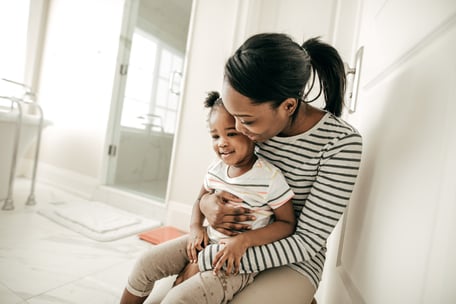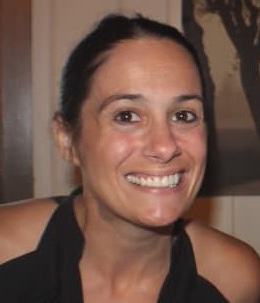A Teachers Guide to Toilet Training Autistic Children: Five Key Steps
Toilet training autistic children can be a daunting task. It requires patience, time, and a team effort. Toilet training is a necessity to develop a more self-sufficient and independent child.
I’m going to talk about what has worked in my classroom for toilet training autistic children. However, it’s important to note that no autistic individual is the same, and some techniques I mention may work for some but not for others.
Five Key Steps to Toilet Training Autistic Children
There are five specific steps that I like to use to break down toilet training for autistic children: readiness, set-up, including the “team,” process, and setbacks.

1. Readiness
Before we start the process of toilet training a neurodivergent child, we need to ensure that they’re ready. Specific skills can demonstrate readiness to start toilet training.
- The first readiness skill would be that the child seems uncomfortable when they have either a wet or soiled diaper.
- Secondly, a telltale sign that students may be ready to start potty training is when they hide while going in their diapers.
- Another way to determine if the student is ready to start toilet training is that they can pull down and pull up their pants without much assistance. Autistic students often struggle to generalize skills. I would recommend working on pulling on and off pants first, and once that skill is mastered, you can start the process of toilet training.
- The last readiness skill I necessitate before starting to toilet train is that the student can follow some 1-step directions.
Toilet training requires both cognitive readiness and the ability of the individual to conform to the behavioral aspects of using the bathroom successfully.
2. The Set-Up
Before we can start the toileting process with our students, we need to prepare to ensure that all possible accommodations are ready. Our neurodivergent students often need the immense task of toilet training broken down into smaller parts.
Firstly, we need to make sure that the student is comfortable in the bathroom. Let’s remember that the environmental factors of the bathroom can overstimulate some students, and we need to make sure that space is prepared for our student’s needs. Here are a few techniques that can help some students feel comfortable in the bathroom.
- If you’re working with little kiddos, I recommend having a stool in the bathroom so that they can comfortably rest their feet while using the toilet.
- If the child is sensitive to noise and the flushing sound causes an adverse reaction to the child, have noise-canceling headphones ready for that student, or don’t prompt the student to flush the toilet. You can do it later when the child isn’t around for the noise.
- To make the bathroom comfortable for your autistic student, I suggest making it a fun area. Have a lot of reinforcers available in the bathroom for the child. These reinforcers may include but aren’t limited to books about potty training, toys, fidgets, and music. Save the most motivating reinforcer and use that when the student uses the bathroom successfully. Keep that favorite reinforcer in the bathroom. However, don’t provide access to the reinforcer until they successfully use the bathroom.
Having the student feel comfortable while using the bathroom will result in better success for that child.

3. Include All Team Members
Another factor that I find extremely important before we can start the process with the student is that everyone is on the same page about toilet training. It’s a team process to get a child potty trained. The team members include the parents, family, therapist, paraprofessionals, and anyone else who may work with the child.
I also suggest that we get rid of diapers during the day for the child during the toileting set-up. Getting rid of diapers ensures that the child feels the wet and uncomfortable sensation when they have an accident. A diaper can hide that uncomfortable awareness for the child.
Toilet training is a lot of work, especially for families of neurodivergent kiddos. They need to be ready to immerse themselves in the process, and that can be very time-consuming. As teachers, we need to reach out to the families and see if they’re ready to start thinking about toilet training, and we need to provide support and understanding while speaking to our families.
4. The Process
Now that we’re prepared and everyone is on board, it’s time to start the process of toilet training our neurodivergent kiddos. We don’t think about all the skills involved in using the bathroom. Most children can generalize those skills, but our autistic students struggle to generalize, and we need to teach each skill required to use the bathroom.
- Some students may require a social story about using the bathroom to help them generalize the skills. Some may require visuals to help remind them of the steps needed to complete the toileting process. Our autistic students are often visual learners, and I always suggest using visuals to accommodate the child’s needs. These can include a first-then visual to remind the student that they will be rewarded with their favorite reinforcer if they use the bathroom successfully. Another I suggest is an embedded visual schedule to help the student through utilizing the toilet.
- Timing is one more crucial aspect of the process of toilet training an autistic individual. Neurodivergent children strive for consistency. A timed schedule for trying to use the bathroom can be helpful. I recommend taking the child often when beginning to toilet train and slowly stretching the time between bathroom breaks depending on progress. You should make sure that the team and the student are aware of the schedule as well. Remember, this has to be a team effort. I’ve used timers in my classroom to remind myself, the staff, and the student when it’s time to use the bathroom. I also suggest giving subtle reminders before the timer goes off. Using a timer in the bathroom can also be beneficial for the student to be aware of how long they should spend in the bathroom. I recommend keeping the time they’re meant to try to use the bathroom short. Less than 5 minutes would be a sufficient amount of time. Having a student wait in the bathroom for a long time can cause challenging behaviors and an adverse reaction to the process.
- An additional and significant part of the process of toilet training a neurodivergent student is communication. An overwhelming majority of the autism community struggles with communication. We need to teach simple communication opportunities that the student can use when needing to use the bathroom. We also need to ensure that the student understands the terms we’re using for toileting and may need to teach some unfamiliar vocabulary. These communication options will vary depending on the needs of your students. Some students may need a picture card or an augmentative and alternative communication (ACC) device to request the bathroom. Others may ask for the bathroom using a word or sentence. At the beginning of the toileting process, keep communication concise and straightforward. Also, make sure everyone uses the same words for toileting. Using precise language facilitates understanding for the student. Supporting communication needs is an essential component to successfully toilet training neurodivergent students.

5. Setbacks Are Part of the Process
Getting a neurodivergent child to become toilet-trained won’t happen overnight. It most likely will take some time, and there will be ups and downs. Setbacks are frustrating, but be aware that they happen.
Students are going to have accidents during toilet training. How we handle the accidents can be detrimental to the student’s progress. Don’t overly focus on accidents when they happen. Redirect the student to the bathroom calmly using simple language. Constantly reinforce and give tons of attention when the child uses the toilet successfully.
As I mentioned earlier, toilet training is a team approach. You, as the teacher, should be sharing successes and struggles the student may be experiencing regarding toilet training. If the school team determines that the student isn’t making progress, you should inform the parents and share options that may be helpful. These options may include having the family reach out to their child’s pediatrician or possibly reaching out to an autism-savvy behavior analyst specializing in toilet training.
Toilet training any child can be challenging, but toilet training neurodivergent kiddos can be more complex and daunting. Yet once a child is toilet trained, it opens doors for so many different opportunities and strengthens independence.
What toileting training strategies have worked for your autistic child? Reach out and let me know.

Tatiana Tortora
Tatiana Tortora is a special education teacher in New York, specifically teaching students on the spectrum. She has her master’s degree in childhood education and students with disabilities. Tatiana is passionate about building understanding and acceptance of individuals with Autism.




